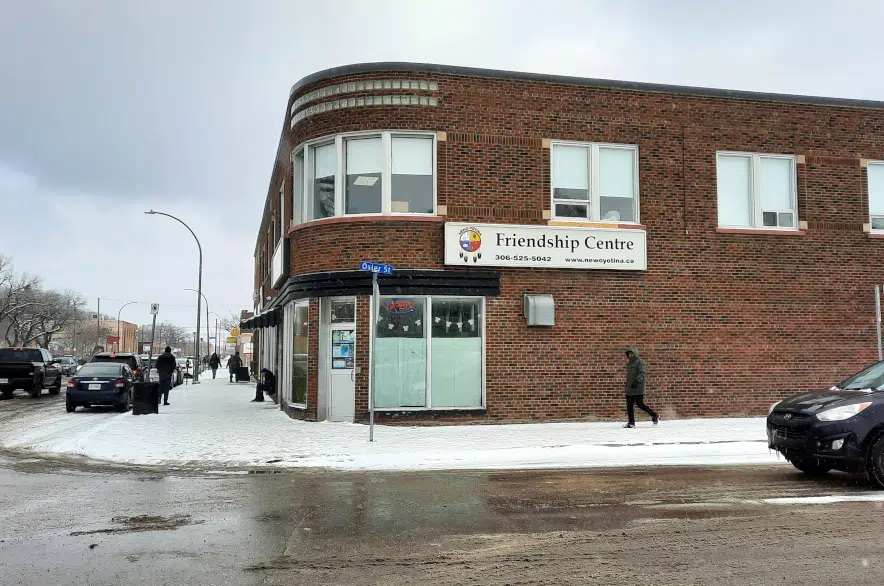As Saskatchewan is on track for another record year of drug overdose deaths, the provincial government appears to be narrowing its focus when it comes to mental health and addictions.
In Wednesday’s throne speech, the government announced it’s moving to a recovery-oriented approach to addictions, while also building capacity in the system and creating a centralized intake system.
“Our focus is on getting these people the treatment that they need so that they’re no longer consuming illicit and potentially lethal drugs,” Mental Health and Addictions Minister Tim McLeod said.
The government also made a point of saying in the throne speech that it would not be providing a safe supply of illicit drugs. Recently, police put out a warning about an animal tranquilizer that had been found in street drugs and wouldn’t be counteracted by anti-overdose drugs.
When pushed on why the government is focusing entirely on recovery and isn’t putting supports into things like safe consumption or a safe drug supply, McLeod would only repeat his message about the focus being on recovery. He said the government thinks it’s important for people to lead healthy lives.
“If you’re using illicit and potentially lethal drugs, you’re not leading a healthy life and so we want to transition these individuals down the path to recovery and help them with all the supports they need,” he said.
McLeod said the government is concerned about the safety of those battling addiction and their communities, which is why he said government is providing the services for people to get off drugs.
This month, the government launched a new five-year plan to address mental health and addictions issues in the province, which includes a new commitment of adding 500 more treatment beds.
“The best way to help individuals with addiction to stay alive is to assist them in breaking the addiction, and that’s where our supports are focused,” said McLeod.
“I don’t believe anybody who is currently suffering from addiction wants to stay in that space. I think we need to help them find a path to recovery and give them the supports they need to walk that path.”
As of Oct. 11, 369 people in the province were either confirmed or suspected to have died of drug overdoses in Saskatchewan, according to the provincial coroner. That equals the preliminary numbers for 2022 and the rate would have the province on track to far exceed the record set in 2021.

At least one advocate says the provincial government focusing only on recovery leaves out an entire group of people who need help. The Newo Yotina Friendship Centre houses the Wâhkôhtowin Harm Reduction centre and Regina’s only safe consumption site. (Lisa Schick/980 CJME)
Emile Gariepy is the harm reduction manager at the Wâhkôhtowin Harm Reduction Centre in Regina. It’s the city’s only safe consumption site.
He said focusing only on recovery leaves out an entire group of people who just aren’t quite ready to get help.
“If you’re just going to look at only rehab centres and not help the people who are using at the moment, then you’re giving them a death sentence. You’re killing these people and saying, ‘Only the people who are wanting to go to rehab right now, we’ll help you out,’ ” said Gariepy.
He said everybody needs help but this kind of a system doesn’t meet people where they’re at and only helps people who are already there.
At the harm reduction centre, which is situated in the Newo Yotina Friendship Centre, Gariepy said they work with people every day and when those people are ready to get sober, he and his colleagues jump in to help.
“It kind of sucks that we’re not looking at the people who are currently using and trying to get them the help that they need,” he said.
“We’re here trying to keep people alive who are already actively using, and how can you rehabilitate a dead person? You can’t save a dead person.”
Gariepy said the government needs to widen its focus and look at help before and after treatment. He said people need things like housing and support afterward so they don’t get back into the same patterns.
“We work with the people who are currently using and a lot of those people — I would say 90 per cent of them — are sick of it and want off the streets and want the help but can’t get it because they go to rehab and then have nowhere else to go afterwards,” explained Gariepy.
He also believes that, if the government got into something like a safe supply of drugs, that would help with overdoses and deaths. The Wâhkôhtowin centre sent out the alert about the animal tranquilizer, xylazine, in the drugs first; it was detected with their drug-checking machine.
“Because xylazine’s in the city, I think that plays a big factor on why more people are dying,” Gariepy said.
He called the drugs a toxic mess and said other places that do provide a safe drug supply have nearly wiped out overdose deaths.
The centre doesn’t get money from the government to fund its safe consumption site but does get some money for other things like drug testing and a safe supply of drug use tools. The friendship centre has put in requests each year for funding, but each year is overlooked.
Gariepy said if the centre could get funding, then it could extend its hours, expand the building, and possibly have a registered nurse working in the building to help people on site instead of having them wait hours at the hospital.
McLeod didn’t answer questions about whether the shift to recovery-oriented care would me a cut to harm reduction funding for things like drug testing, instead saying that more details on the new focus would be released soon.











